A Reflection on my Father - The Chef
By Conchita de Souza
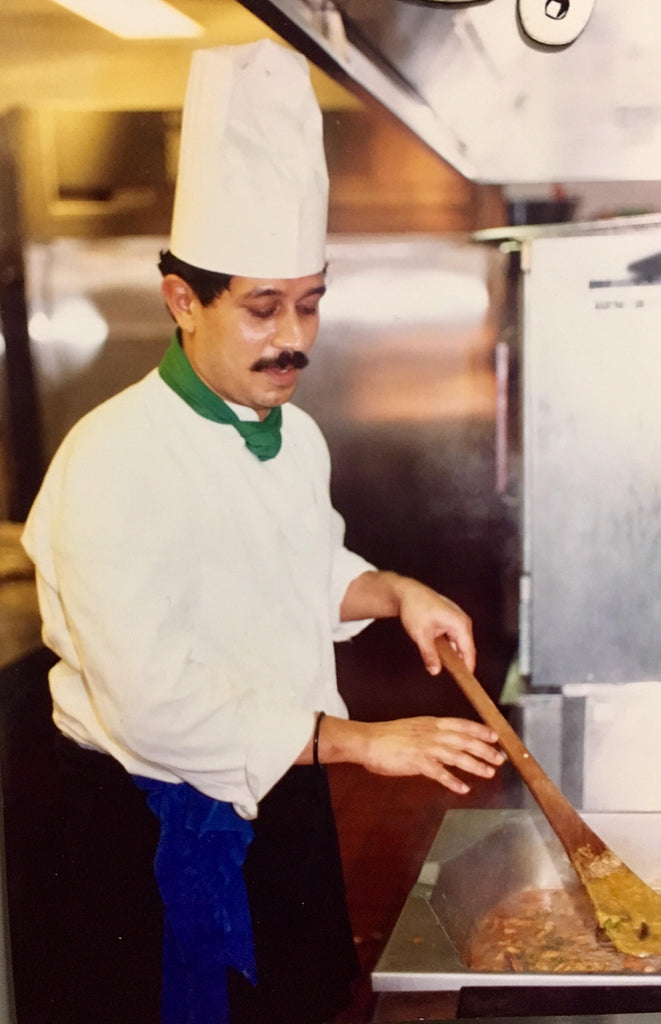
By Conchita de Souza

By Conchita de Souza
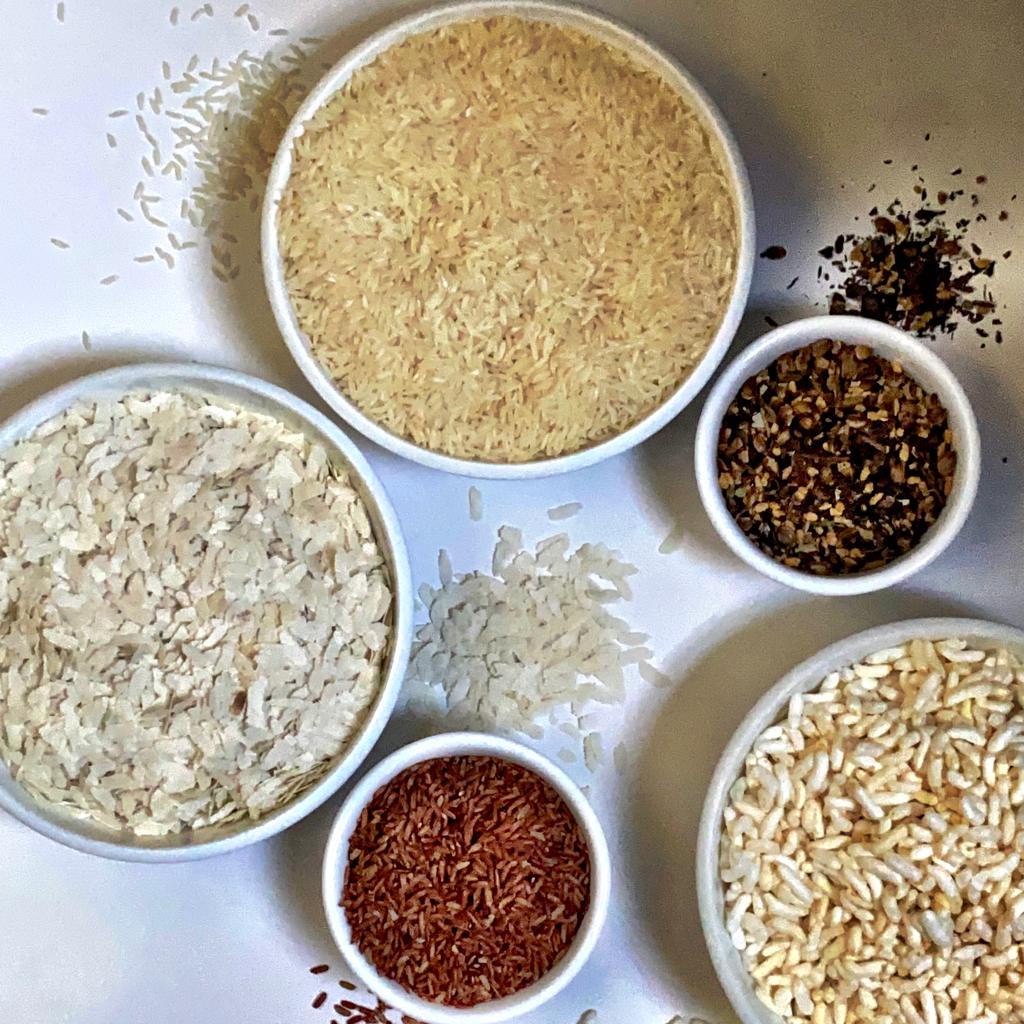
Who would have thought that something as tiny and apparently insignificant as a grain of rice would be the foundation that sustains the world’s largest populations for millennia? The variety of grains and the multitude of ways in which they are used are as diverse as the inhabitants who occupy India. The origins of the cereal grain are traced back to ancient China, where it has been cultivated for 5,000 years. The grain is said to have worked its way through to India from China via the Himalayas. Rice was first mentioned in the ancient Sanskrit text Yajur Veda (1500 - 800 BC) and its earliest cultivated remains date from around 2000 BC - making it pretty darn ancient!
In India, rice is the first and last food as it is easy on the digestion. For babies it is their first solid and for the infirm and old their last sustenance. Nowadays, in most regions of India, rice is a staple dish and is consumed in a myriad of ways.
Below, we explore some of the different uses of rice in the daily lives of Indians.

There you have it - some of the main uses of rice in India, though far from all the uses. Have we missed anything? Comment below and let us know.
By Conchita A. de Souza
By Claudette D'Cruz
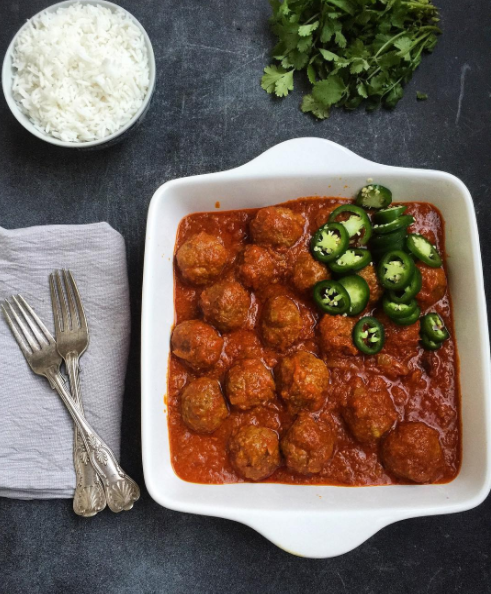
I must say that when it comes to the hot summer days in Sydney (which seem quite distant right now as we are smack bang in the middle of autumn), I welcome nothing more than the stormy evenings that follow which settle the dust and temper the heat’s rage. Whilst Australian summers can be hot, it really is nothing compared to summers in most parts of India which involve three months of unceasing, unforgiving and relenting 40+ degree heat. The night brings enough relief for our burnt souls to slumber before we wake the next day to face summer’s wrath. Until one has lived through an entire Indian summer, one really cannot appreciate the relief that the monsoon rains bring. The weather becomes pleasant, albeit a tad humid; the landscape becomes green and lush (which unfortunately the mosquitoes seem to enjoy and hence begin their season of breeding); and most importantly, the appetite increases sevenfold as the tastebuds start to crave. They crave anything remotely hot, spicy, crispy and creamy (sometimes all at once) after being subdued by the summer’s stifling heat and being released from the want of all things icy, liquid and juicy.
It was during this climate that I explored the famous cuisines of Hyderabad; with the skies grey, low and impregnated by the drops of monsoon rains, now in its second month of falling on to parched earth. Hyderabad is the capital city of Telangana, a state which was recently formed in 2014. Before that, Hyderabad had long been under the rule of the Nizams - the Monarchs who were once a part of the Mughal Empire, but declared themselves independent after the Empire collapsed in 1724. The Nizams ruled over Hyderabad until it was annexed during an Indian military operation post Indian independence in 1948. When you travel throughout the city, there are remnants of this rule in the ancient landmarks as well as in the customs, cultures and feel of this bustling city.
One weekend I wandered through the old city of Hyderabad which sports the iconic landmark which has become synonymous with Hyderabad - Charminar. It was not my first visit to this beautiful place, but I had still gone with my camera in hand, ready to capture the culinary delights as much as the magnificent architecture. I visited a famous restaurant called Shahran, just outside one of the four gateways leading to Charminar. It is known for its delicious and crispy samosas and also its beef kebab served with peanut chutney and hot, oily, and soft parathas (click here for our simple stuffed paratha recipe). I could not go past ordering a pink falooda, a popular drink made from rosewater, milk and vermicelli. Not too far from Shahran is the famous Nimrah Bakery, which always has a crowd of people inside and outside the joint. Nimrah Bakery has a very simple menu of chai, various biscuits and puffs - it is basically a tea spot. I squeezed myself into a booth joining a family of four messily slurping their tea and munching on their biscuits. I ordered Suleimani chai (strong black tea) and Osmani biscuits - yet another (edible) symbol of Hyderabad. These biscuits are buttery and subtly sweet at first bite but once they leave your tongue they part with mild salty taste - similar to that of a cracker. They go darn well with chai and are a popular take-back gift for most visitors to Hyderabad. I’ll unashamedly admit that I returned to Nimrah Bakery the following week for the same Osmani biscuits this time accompanied with a sweeter and milky Irani Chai. It was divine, as expected.

Hyderabad is also famous for its biryani - a festive dish made from a spicy, flavoursome and thick gravy containing meat (popular choices are mutton and chicken) which is absorbed by fragrant and colourful basmati rice. Paradise Restaurant is said to serve some of the best biryani dishes in Hyderabad and it is so famous that there are road signs directing people towards it (which I dutifully followed to reach the said destination)! This time round, I went to Paradise for their range of delectable kebabs (mutton shami and garlic chicken) which are always served with green chutney, lemon wedges and raw onions just because life is a lot tastier with all these three ingredients.
You might be wondering when this ode to Hyderabadi cuisine will draw to an end, and I would like to politely inform you that it shall, soon, but not without mention of one last iconic dish, Dosa. Dosa is a staple in south India and is differently prepared and consumed throughout the south (we have an instant dosa version that you can try out without the fuss right here). In Hyderabad, I was introduced to the ‘butter cheese dosa’ by a local friend. It kind of tastes like a thinner, crispier and spicier version of pizza. When I first watched the street vendor make the dosa right in front of me, I was alarmed by the copious amounts of ghee, butter and cheese he so liberally lashed out. As soon as I took my first bite, the alarm melted away at the same rate as the cheese in my dosa did (it was fast, very fast). I must warn you that this butter cheese dosa is deceptively heavy and might result in the unfortunate skipping of your next meal. But seeing as I was still in Hyderabad and had much more to do (read - eat), I wasn’t too concerned by just how satiated I was and wobbled along before the rains reached their point of wrath.
If you have fallen in love with Hyderabad’s rich cuisine but can’t just as yet afford the air ticket to get there, we’ve got you covered. You can bring the flavours of Hyderabad to your kitchen with a little help from our naturally-blended and authentic spices. Try making our baked Hyderabadi Koftas (Baked Meatballs) or if you are feeling like a feast - our rich Biryani, all from the comfort of your kitchen.
By Conchita A. de Souza
By Claudette D'Cruz
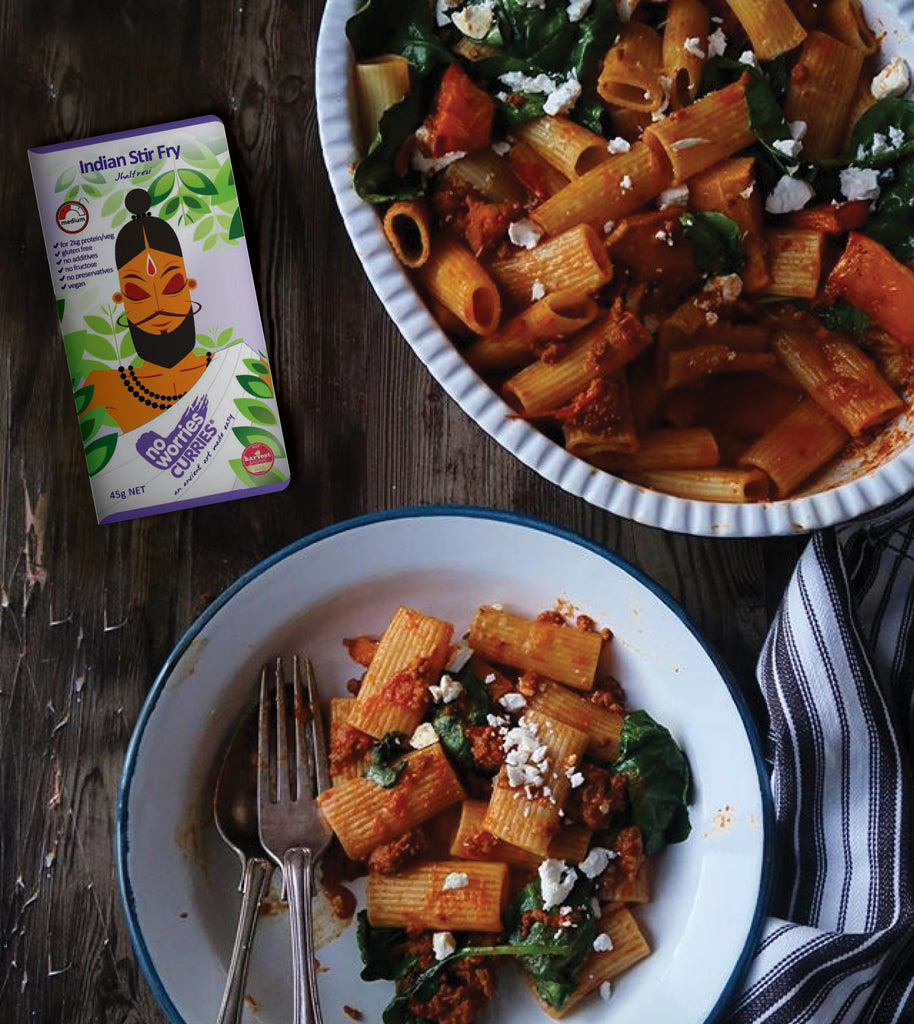
I hate to burst your bubble of pride as you tuck into your home-made curry, but your success is old news – ancient to be precise. Curry is believed to be the oldest continuously-prepared food in human history, and early home cooks were whipping up a good spicy stew around 4,000 years ago in the ancient Indus Valley empire of India.
Of course our early ancestor's curries little resemble modern-day curries. Even in the 17th century the Indian 'kari' was merely one of many soupy-spicy dressings served with other dishes and not as the main event. The Europeans, while merrily colonising India, incorrectly assumed all these dressings were 'currys' (as they called them), and scurried back to their home countries with a recipe.
But then everything changed. While the English were making “currey the Indian way” (a rabbit stew with a spoonful of rice and various spices), the chilli journeyed from it's native South America to Asia and the curry became the fiery version we know today.
That said, curry remains one of the most diverse and varied foods on the planet. Eat a curry in Jamaica and it will likely contain goat, while South African's chew on 'bunny chow' and the hawker stalls of Hong Kong sell curry fish balls.
In the Maldives the top curry is made with fresh tuna, Germany's classic currywurst pairs a sausage with curried ketchup to great effect, and the first Australian settlers dined on bandicoot curry in 1864.
It all started in India though, so to India we must return. Curries vary by region, tradition and religion in India, but the general rule is that southern Indian curries are the spicier ones, and coastal regions use seafood more than chicken or red meat.
Your average curry contains around 60 ingredients, but before you scream and vow you will never cook one again, remember that many of these contain health benefits, so are worth the effort of adding to your meal.
Key spices like turmeric, cumin, allspice, ginger and garlic have anti-bacterial properties; onions help the body produce cancer-fighting molecules; and the hotter the spice the more calories you burn eating it!
Ultimately, what really matters is the pleasure that a good curry brings: it's both soothing and stimulating, explosively flavoured and endlessly varied. Let that pleasure be heightened by the effort that goes into making it, and the link it creates with our ancestors and the global society of curry eaters. Throw in the fact that you are doing your body some good just by tucking in and there is no reason not to open your next packet of spices and get cooking!
By Claudette D'Cruz
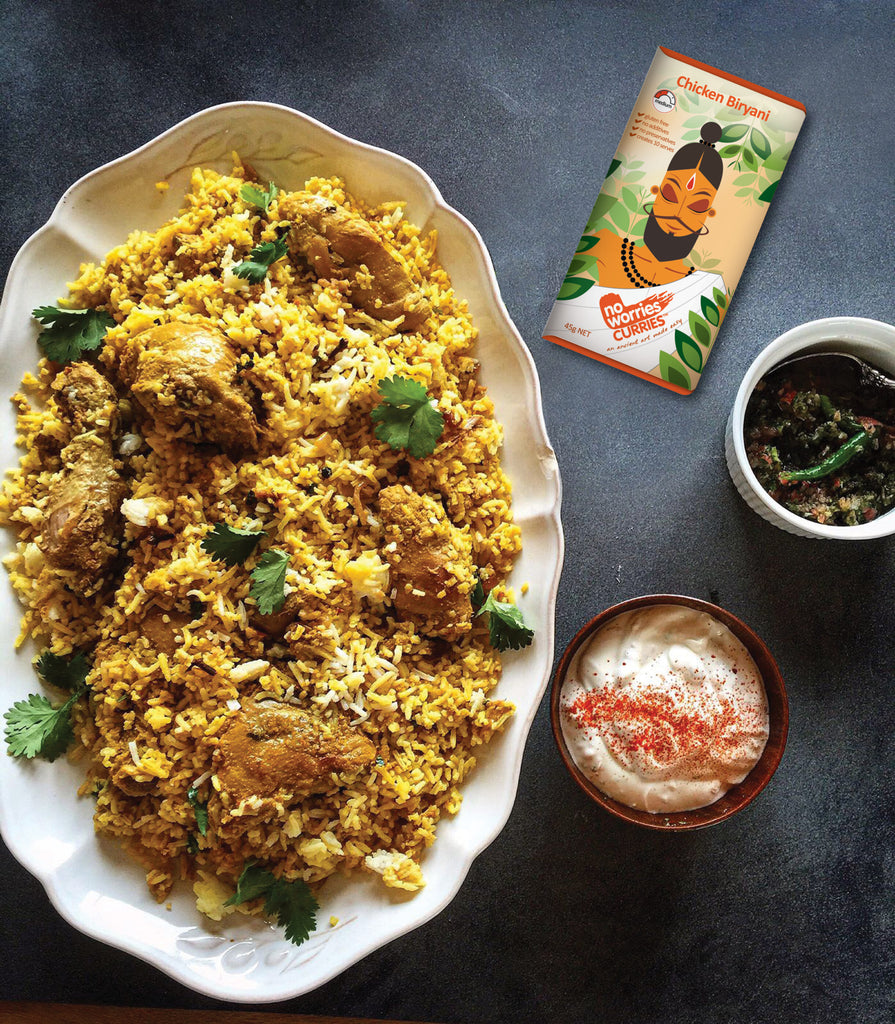
The Signs of Festivities
As a child growing up, you would be familiar with the sights, sounds, tastes and smells that certain festivals bring. Whether it be sound of popping champagne on New Years Eve or the smell of turkey roasting in the oven on Christmas Day - each celebration was a feast for our sensory organs. Heck, even the smell of grandma’s gloriously decadent butter cake baking in the oven prompted aggressive rumbles from the awakened beast that our stomachs can be. For a child growing up in an Indian household, the smell of Biryani wafting through the house was enough to get my nose on a high! I suddenly resembled my dog, sniffing the air in a most thorough manner so as to consume the delightful aromas passing by. My father prepared biryani only for special occasions like birthdays or anniversaries - partly because it can be quite time-consuming if made the traditional way, but also because he wanted to honour the dish’s celebratory purpose.
Biryani’s History
When examining the historical accounts pertaining to this delightful dish, one realises that it cannot be accurately traced back to a single point of origin. The Persian word ‘birian’ means ‘fried before cooking’, and hence ‘biriyani’ is said to have originated as a Persian dish. The Mughal invaders originating from Turkey, Persia and Arabia were said to have brought the ‘feast-like’ culture to India, including the acclaimed variations of biryani. Another tale tells of Mumtaz Mahal, the queen of Shah Jahan and the reason for the majestic Taj Mahal’s existence, who upon visiting the army barracks, noticed that the Mughal soldiers appeared weak and under-nourished. She advised the chef to prepare something more filling, that would meet the nutrition requirements of their protectors - and so he made biryani. With such varied accounts, it is hard to pinpoint when, where and how this celebrated dish originated. Needless to say, I certainly appreciate the respected chefs of our ancestors for coming up with this culinary creation. Mine and your tastebuds are blessed to have savoured the deliciousness that is biryani.
Layers of Joy
For those of you who may not be entirely familiar with the contents of a biryani, rest assured, I have you covered in this section. There is no one such recipe for biryani; it can be made with a variety of spices, proteins and even vegetables. One essential ingredient is rice - which forms the base of the dish. Spices are then combined with specific proteins such as seafood, chicken and mutton or with vegetables to create a flavoursome mix to add to the rice. If you want to know more about the variations and styles of biryani, and get more of a historical perspective, have a read of this article from The Better India.
My dad prepares biryani as an act of labourious love. He starts by marinating the meat with spices and yoghurt overnight. The next day he makes the plain rice, often cooked with spices like cardamon and clove to give it a most beautiful fragrance. As a garnish, he fries in ghee (clarified butter, or better put, liquified and tasty gold) raisins and then onions. Then he slow-cooks the meat with more onions and spices until a thick gravy is formed. It then becomes a matter of assembling; he will line the base with rice, then meat, then rice and then meat and repeat this process until the pot is filled. Lastly, he adds the garnish of raisins and onion and ends up with a finished product like you see in the image below. Biryani is often accompanied with raita - a fresh yoghurt dish that has some subtle spices and raw tomatoes, onions and cucumber finely chopped and added to it. All in all, it may have taken my dad two days to prepare this dish, but I devoured my plate in under five minutes. Fortunately, biryani is made in large quantities, and so you can have left-overs for dinner the next night, or for lunch, hey, maybe even breakfast (no shame folks, no shame).
Call to Action
I do not apologise if this post has prompted ceaseless salivating. Indeed it has had this effect on the writer, who is now wiping the corners of her mouth before anyone passes by and wonders exactly what on earth she is doing salivating with no food in sight. However, I may have an appropriate panacea to your craving. I exhort you to either:
Now what was I doing before writing this? Ah, yes. Eating biryani.